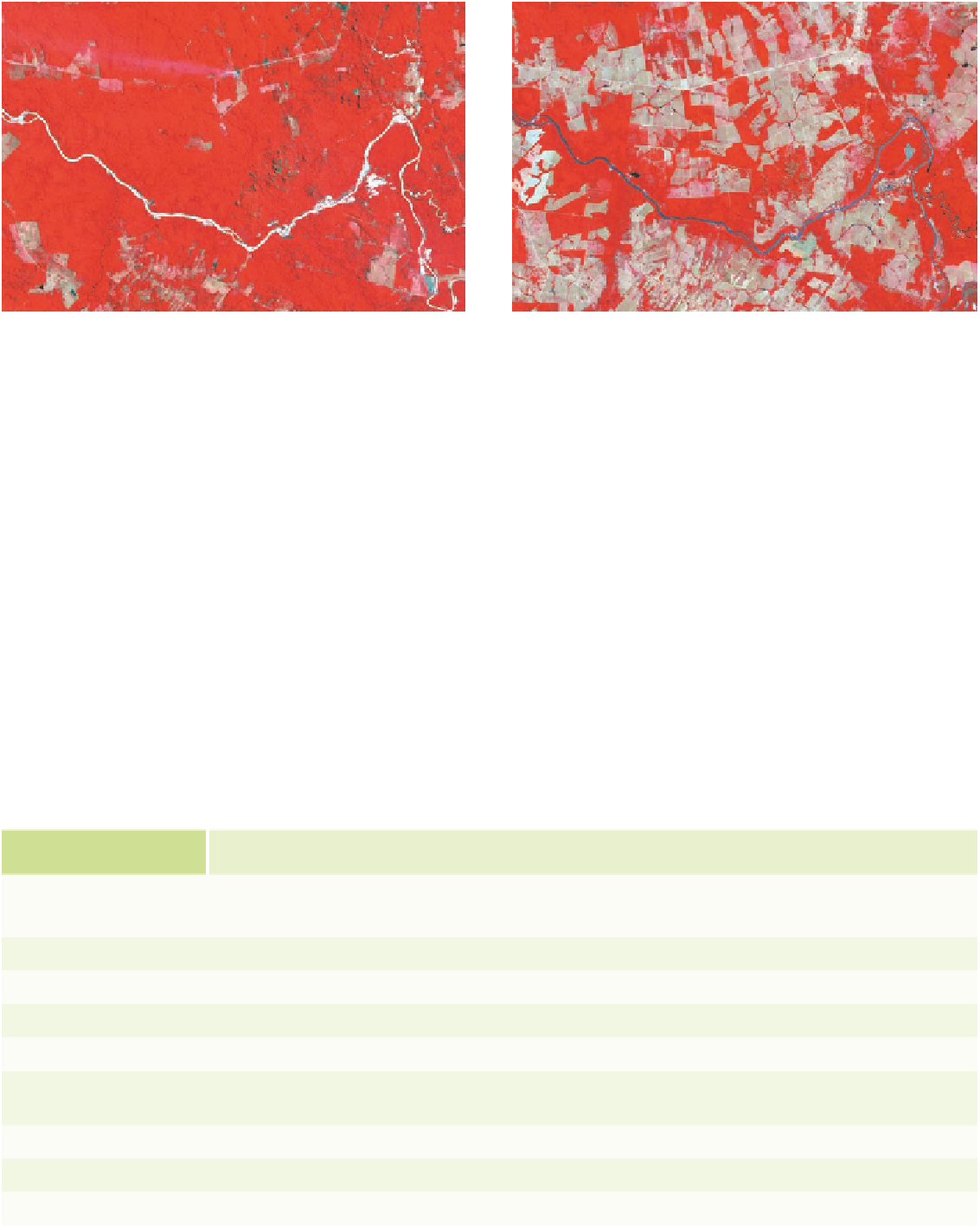Geoscience Reference
In-Depth Information
(a)
(b)
Figure 10.28. Monitoring deforestation rates.
(a) Infrared satellite image acquired in August 1992 with the Landsat Thematic Mapper of
a part of Mato Grosso state in Brazil. (b) Infrared image of the same area acquired in July 2006 with the ASTER instrument on NASA's Terra
satellite. Note the extensive amount of deforested area in this image compared to that observed in 1992.
trees in a tract of land and then burning the leftover woody debris
(Figure 10.29). Burning this debris not only clears the land so
that it can be tilled and planted; it also increases the soil fertility
by recycling organic nutrients. Although this method produces
good crop yields for a few growing cycles, soil fertility decreases
pretty quickly. As a result, new land must be cleared and burned
to begin the cycle again.
Deforestation of tropical rainforests is a major concern
because of the negative impact it has on biodiversity within
the tropical forest biomes. Given the biocomplexity of these
regions, it is unknown how the effect of cumulative clearing
ripples through the system. Many scientists believe it is pos-
sible that deforestation will cause extinction of plant and ani-
mal species that have yet to be discovered. In addition to the
extinction loss, which in turn has unknown consequences for
the overall ecosystem, such species are potentially important
because they could yield the next wave of pharmaceutical drugs
for human medical use. Deforestation may also be very impor-
tant with respect to global warming. The tropical forest regions
are sometimes called the
lungs of Earth
because they absorb
carbon dioxide and release oxygen through photosynthesis. If
forest loss continues, less atmospheric carbon dioxide will ab-
sorbed, which means that the net level of carbon dioxide in the
air will increase.
Given these concerns, it is good news to know that the
rates of deforestation in tropical regions appear to be slowing
somewhat. This trend is clearly obvious in the Amazon where
the rate of forest loss has fallen nearly 80% since 2004. Of
particular significance, this decline has occurred during a pe-
riod of robust economic growth in Brazil, suggesting that the
T A B L E 1 0 . 2
Change in Forest Cover (in millions of hectares), 1990-2010
Percent Change
1990-2010
Continent
Total Forest 1990
Total Forest 2000
Total Forest 2010
Africa
702
650
620
−11.7
Asia
551
548
580
+0.5
Oceania
201
198
195
−3.0
Europe
990
1000
1005
+1.0
North and Central
America
555
549
550
−1.0
South America
923
886
875
−5.2
Total World
3963
3869
3825
∙3.5
Source:
U.N. Food and Agriculture Organization, Global Forest Resources Assessment 2010 (France, 2010).































